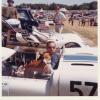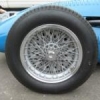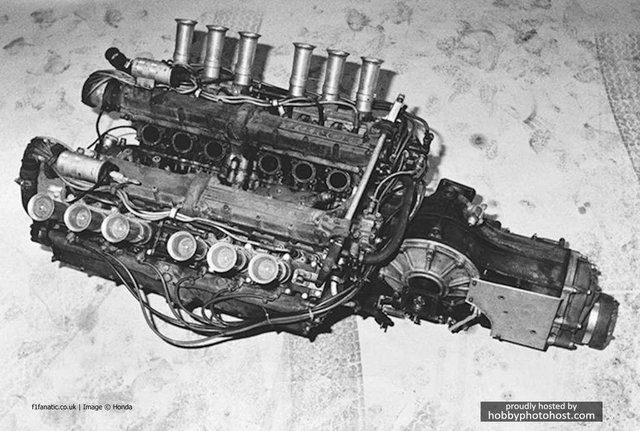I've recently been working on an old Tamiya 1/12 scale model of this car. While I've seen lots of amazing builds on modeler forums, I'm happy to just build it clean from the old kit. It's given me plenty to think about and appreciate in terms of the packaging of the car, but it does not look like there is a strong historical write up of it's features from any source I've come across. The radiator pipes running along the underside of the chassis were a surprise, for example.
One mystery is the transistor boxes mounted behind the roll bar, which were adjacent to aluminum (presumably) air deflectors. The throttle cable appears to emerge from the lefthand one of these and extend back to a lever mounted on a transverse shaft that spans the rear end of the engine and rotates to operate the throttle plates of each bank. In some photos it looks like there is a wheel that deflects the path of the cable over the lefthand bank of cylinders.
So that has me wondering how the throttle cable would have been routed forward of the rear bulkhead, or were Honda playing with some sort of early transistor controlled throttle system?
If not, I don't understand why they would not have routed the cable back along the righthand side of the chassis and simply reversed the lever end of the cable acting on the rod so that it would have been on the righthand bank. It seems like this would have been closer to a two dimensional S-bend than the three dimensions and curves it would take to get it across the chassis. Another possible explanation is that additional "wheels" similar to the one that was sitting over the lefthand cylinder bank were mounted elsewhere to route the cable through the chassis somehow. Although that seems like a more complex option.
I figured this would probably be the place to ask, but if it belongs in another category, mods please feel free to relocate.
















